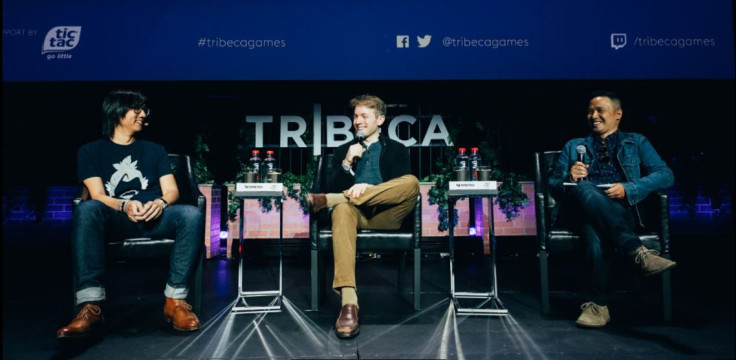At the Tribeca Games Festival Michael Chu, a senior game designer for Overwatch , talked about some fantasy narrative situations. He was there to give insight on the game’s unconventional approach to storytelling, particularly an FPS. So when asked for some games that don’t have story, but could use some, he answered.
“Cutscenes in Tetris.”
It is, on its face, an absurd concept. But as an avid Overwatch fan and Festival attendee it felt sort of possible. Because Overwatch has managed to hook millions and millions of fans with a fantastic multiplayer game Chu said was fundamentally built on story.
“We’re storytellers in addition to game makers. We wanted to have this big universe for people,” he told the crowd.
On the surface Overwatch looks like Tetris , in that it doesn’t appear to be a game driven by story. Sure, instead of cascading tiles there’s frenetic multiplayer action. But there’s no significant dialogue or conversation. No obvious drama between characters. How do you tell a story where characters don’t talk beyond a handful of quips?
"We had to be really efficient. There weren't that many places to get story out inside Overwatch ,” Chu said. Overwatch players only learn about characters through the lines they speak when on an objective point or after an elimination.
“You learn all about their relationship to the payload,” Chu said, laughing.

But the character stories run deep on the development side. Chu said early on different departments would ask him for story elements to inform their decisions. He said one person asked him for a twenty-year backstory that he definitely didn’t have, but other requests were easier.
For example, when designing Ana the team knew they wanted a support character that required the skills a DPS player would use, so a healing gun was introduced. Some of the artists asked for an explanation on how it worked. Chu told them it was based on Mercy’s technology and it gave them the idea to use darts instead of bullets. Adding context to decision-making is a lesson Chu said came from the Blizzard team having years of veteran experience.
“I think what we've learned about development through the years is that when you're making these heroes and you're making these levels and you're making the art it helps to have the story background,” he said. “We basically made the decision that stuff would exist outside of the game and you'll just sort of it see it reflected inside the game."
Ultimately the goal is to create enough interest that the collective result of all this subtlety will be fans engaging with the story shared on other platforms. Chu is thrilled fans care enough to read a comic or spare five minutes to watch an animated short. It’s a sign of success.
Character creation might be informed by story but it’s not always inspired by it. Chu said things like mechanics and art can be the start of a new character. He cited Winston as an example of a character that started with art and just looked so cool they had to make it happen.
"Sometimes he'll just draw something,” Chu said, referring to Arnold Tsang, a concept artist at Blizzard who worked on the first 21 Overwatch characters.
Mechanics play a role too. During the initial play testing Chu said there was a time known as “Turretgate” where “people were just getting murdered” by defensive turret characters like Torbjorn and Bastion. So the team recognized the need for a character that used indirect fire and it served as the inspiration for Junkrat.
“The great thing about the process is once we have an idea from one of those three lanes we quickly get together and figure out a hero’s basic story and mechanics and art so we can all tune in and design from there,” Chu said.
It was an insightful talk about a process has a built a fanbase in the tens of millions, and one that seems capable of sustaining a large audience. I don’t think we’ll ever see a Tetris reboot with cutscenes but if any studio could do it, it would be Blizzard.
- Amazing Art Style
- Balanced Mechanics
- Characters Keep You Coming Back For More
- No Single Player
- Overwhelming At First



















